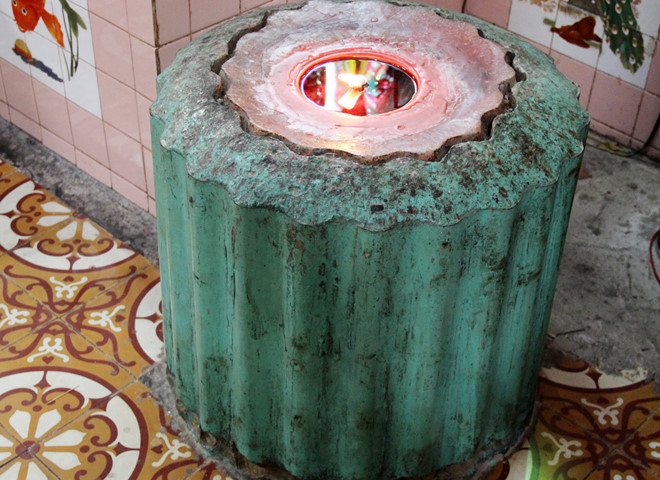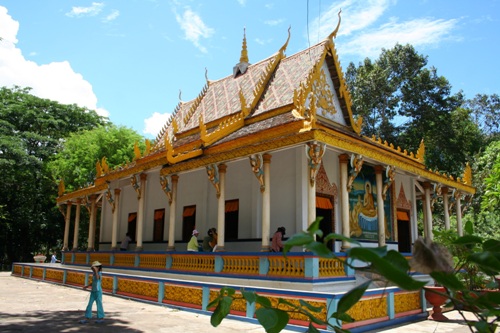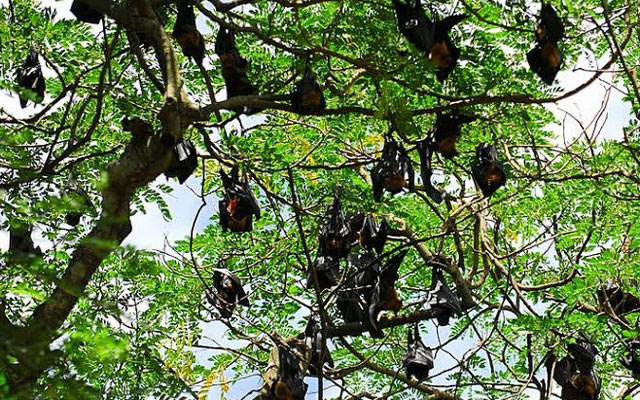Tet holiday, visit two exotic pagodas in Soc Trang province
In Soc Trang city are two pagodas that stand apart from other places of worship around the country.
The Mekong Delta is not only well-known for its white rice, fresh water, mild climate, and year-round fruit but also its historic relics and special temples.
In Soc Trang province alone are two unique pagodas, called Chua Dat Set (Clay Pagoda) and Chua Doi (Bat Pagoda), which attract large crowds of people every day who come simply for a visit or to attend worshipping ceremonies.
Clay Pagoda is located in Soc Trang city and was where the Ngo family practiced a Buddhist life about 200 years ago. Their descendants continue to manage and take care of the worshipping place.
The pagoda is famous for its unique architectural design, not only in the Mekong Delta but also throughout the country, with thousands of statues and statuettes made from clay. Most were produced by artisan and Chief Monk Ngo Kim Tong, who was the fourth generation of the Ngo family. He was born in 1909 and died in 1970 and made the statues over a period of more than 40 years while he was Chief Monk.
 |
Giant candle in Clay pagoda (source: Lao Dong Xa Hoi)
Though he never studied art or sculpture, he made thousands of lifelike statues and objects in different shapes and sizes. His statues include Guanyin, Gautama Buddha, and other mascots like a white elephant, a horse, a tiger, and a dragon.
The pagoda is right by the side of Ton Duc Thang Street, just 2 km from the city centre. Upon entering a modest gate bearing a sign that says Buu Son Tu (Buu Son Pagoda) - Chua Dat Set’ and following a narrow path on the right side, visitors will reach the pagoda. What is a slightly annoying to many visitors is a row of stalls where vendors sell things like dried fish, salted fish, cakes and fruit. The stalls are busy most of the time.
 |
Clay mascots in the pagoda (source: Lao dong xa hoi)
However, the annoyance vanishes as soon as visitors enter the hall, where they can find dozens of mascots, some of which stand higher than human beings and look real rather than clay statues made more than half a century ago.
‘To make such elaborate statues, the late Chief Monk Tong had to get the clay about 1 km from the pagoda, dry it, pound into powder, and sieve it to remove all the small stones and twigs to get the finest clay,’ a monk told us. ‘He then mixed the powder with crushed mangrove charcoal to produce a soft tough mixture that was then used to make the statues.’
In addition to the clay statues, visitors can also find huge candles, with the tallest standing almost 3 metres and weighing a dozen kilos, with a circumference of around 1 metre. Such giant candles may burn for a hundred years. There is now a medium-sized candle at the pagoda that has been burning since Chief Monk Tong died in 1970, and only about half has been burned.
Chua Doi (Bat Pagoda) - Khmer history
 |
Bat Pagoda in Soc Trang (source: vnexpress )
Unlike the Clay Pagoda, which has an area of less than 500 sq m, Bat Pagoda is located in a large area of up to 7 ha and is among the largest, oldest and most beautiful pagodas belonging to the Khmer people in southern Vietnam. It sits about 3 km south of the centre of Soc Trang city.
Almost every part of the pagoda, from the gate to the hall and even the surrounding walls, are in a bright yellow colour. The design is primarily Khmer-style architecture, with conical towers shooting up into the sky from the roof of the pagoda in the shape of the head of a Naga snake at the top end of each tower. In the hall is a 1.5-metre tall statue of Gautama Buddha made out of a huge rock, and around the statue are walls with lively paintings.
The pagoda also has straight lines of very tall trees between that are indigenous fruit trees like mango, durian and mangosteen. Right behind the pagoda is a large pond thickly covered with lots of water hyacinth, making the atmosphere around the pagoda quite cool.
Visitors can also see a music corner, where Khmer performers provide entertainment.
One of the most exciting things for visitors is walking to the area behind the pagoda to see the bats, some of which can weigh a kilo each. They hang from the branches of very tall trees and at times number in the thousands.
 |
Bats hanging on tree branches around the pagoda (source: danviet)
We arrived at the pagoda pretty late in the afternoon, when most of the bats had gone hunting for food. We could see only a few, but some were gigantic, with wingspans of around 1.5 metres and perhaps weighing 1-1.5 kg each. Local people say the bats only reside in this area of the pagoda and never move to other areas.
The pagoda is also a place for pigs with five toes on their feet, not the usual four. Local people believe that such unusual pigs can bring bad luck, so they give them to the pagoda, where they are raised. When they die the pagoda buries them in a corner of the pagoda.
Over time, hundreds of such pigs have been buried at the pagoda. People describe it as a sacred place and many now visit to pray for good luck, not bad./.
( VNF/The Guide )
Recommended
 Travel
Travel
Vietnam Through Australian Eyes: Land of Flavor, Warmth, and Timeless Charm
 Travel
Travel
Strategies for Sustainable Growth of Vietnam’s Tourism from International Markets
 Travel
Travel
Vietnam Strengthens Its Presence On The Global Tourism Map
 Multimedia
Multimedia
Phong Nha-Ke Bang National Park Named Top Adventure Travel Site
Popular article
 Travel
Travel
Vietnam Welcomes Record-High Number of International Visitors
 Travel
Travel
Luxury Train From Hanoi To Hai Phong To Be Launched In May
 Travel
Travel
Phong Nha Named Top Budget-Friendly Travel Destination for Spring 2025: Agoda
 Travel
Travel



